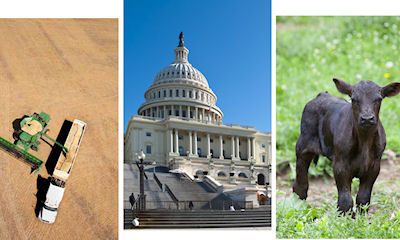
Need a quick catch up on the news? Here are seven agricultural stories you might have missed this week.
1. The United Nations published a report this week calling for investment in the agricultural infrastructure in Syria. After six years of war, there's been more than $16 billion in damage to the nation's crop and livestock production. – UN News Centre
2. Sonny Perdue's nomination to be agriculture secretary will be delayed until at least April 24, while Congress returns from its spring recess. – Farm Futures
3. Britain has two years to disentangle itself from the European Union and set up what tariffs apply to agricultural products. The commitments must be World Trade Organization compliant. – Nasdaq
4. Farmers and their labor forces are caught in the crosshairs of the latest federal government push to enforce immigration laws. Immigrant employees live in fear while their employers fear Immigration and Customs Enforcement agents will show up in their parlors and fields. Unauthorized workers make up about 50% to 70% of U.S. farm workers. – Farm Futures
5. Emergency grazing has been authorized on Conservation Reserve Program lands in Kansas, Oklahoma and Texas. March wildfires burned more than 1.5 million acres in the three states and killed an estimated 9,000 to 18,000 cattle. – Farm Futures
6. A poll in Iowa finds that farmers there are increasing their use of conservation best management practices designed to meet the goals of Iowa's Nutrient Reduction Strategy. Farmers reported they are decreasing fall fertilizer application by 21%. No-till was commonly used, with 42% of respondents reporting they used at least some no-till. Cover crops were reportedly used by 21% of farmers. – Wallaces Farmer
7. The House Agriculture Committee held a hearing on how tax policies impact those in the agricultural industry. House Republican leadership has proposed a blueprint for tax reform, "Better Way for Tax Reform." – Farm Futures
And your bonus: The New York Farm Viability Institute is funding a medicinal plant project. The project targets 50 species with an establishment-to-harvest range of one to 20-plus years. – American Agriculturist
About the Author(s)
You May Also Like




